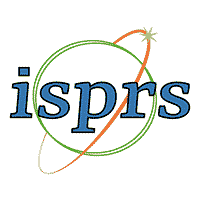Topic Menu
► Topic MenuTopic Editors



2. School of Urban Design, Wuhan University, Wuhan 430072, China
The Geography of Digital Twin: Concepts, Architectures, Modeling, AI and Applications
 (1).jpg)
Topic Information
Dear Colleagues,
Digital twins (DTs) are a new paradigm of digital transformation that impact and provide feedback for real-world problems by presenting optional solutions. Geospatial research can be advanced in this paradigm by integrating real-time data, simulation models, and artificial intelligence to create dynamic, high-fidelity representations of physical and human systems and test potential solutions. With applications spanning climate change, urban planning, infrastructure management, public health, and environmental monitoring, DTs enable data-driven decision-making and predictive analytics.
This Special Issue explores the advancements in concepts, architectures, modeling, geospatial AI, interoperability, ethics, and applications of digital twins. Key challenges such as data interoperability, scalability, privacy, and governance will also be addressed. By bridging remote sensing, GIS, and AI, this issue aims to advance both the theoretical foundations and practical implementations of digital twins in geographic sciences. We invite researchers to contribute innovative methodologies, interdisciplinary perspectives, and real-world case studies. Potential Topics:
- Digital twin concepts, frameworks, and architectures;
- Spatiotemporal modeling and simulation in digital twins;
- Remote sensing and GIS integration for digital twins;
- Geospatial AI and machine learning for digital twins;
- Interoperability and data integration challenges;
- Ethics, governance, and data privacy in digital twins;
- Applications in climate change, smart cities, infrastructure, and public health;
- Big Earth data and digital twins for environmental monitoring;
- Case studies and best practices in geographic digital twins.
Prof. Dr. Chaowei Yang
Dr. Daniel Q Duffy
Dr. Xiao Huang
Dr. Lingbo Liu
Topic Editors
Keywords
- geographic digital twin
- geospatial AI
- earth observation
- urban analytics
- health geography
- spatiotemporal computing
- deep learning
Participating Journals
| Journal Name | Impact Factor | CiteScore | Launched Year | First Decision (median) | APC | |
|---|---|---|---|---|---|---|

Applied Sciences
|
2.5 | 5.5 | 2011 | 19.8 Days | CHF 2400 | Submit |

Geomatics
|
2.8 | 5.1 | 2021 | 20 Days | CHF 1000 | Submit |

ISPRS International Journal of Geo-Information
|
2.8 | 7.2 | 2012 | 34.2 Days | CHF 1900 | Submit |

Remote Sensing
|
4.1 | 8.6 | 2009 | 24.9 Days | CHF 2700 | Submit |

Smart Cities
|
5.5 | 14.7 | 2018 | 26.8 Days | CHF 2000 | Submit |

Preprints.org is a multidisciplinary platform offering a preprint service designed to facilitate the early sharing of your research. It supports and empowers your research journey from the very beginning.
MDPI Topics is collaborating with Preprints.org and has established a direct connection between MDPI journals and the platform. Authors are encouraged to take advantage of this opportunity by posting their preprints at Preprints.org prior to publication:
- Share your research immediately: disseminate your ideas prior to publication and establish priority for your work.
- Safeguard your intellectual contribution: Protect your ideas with a time-stamped preprint that serves as proof of your research timeline.
- Boost visibility and impact: Increase the reach and influence of your research by making it accessible to a global audience.
- Gain early feedback: Receive valuable input and insights from peers before submitting to a journal.
- Ensure broad indexing: Web of Science (Preprint Citation Index), Google Scholar, Crossref, SHARE, PrePubMed, Scilit and Europe PMC.


